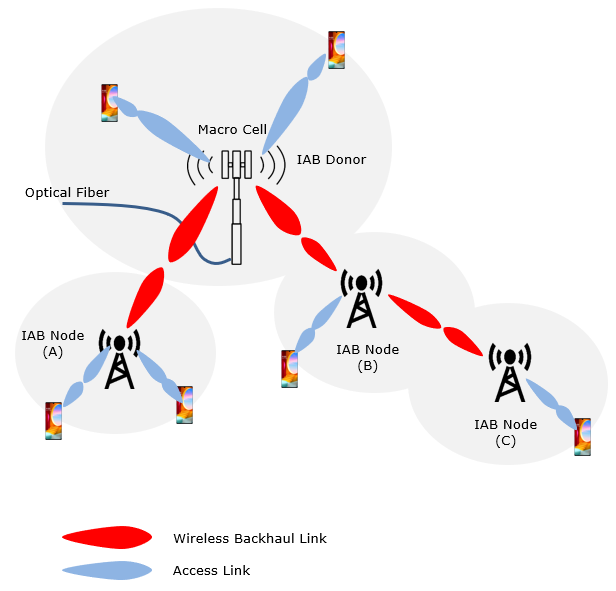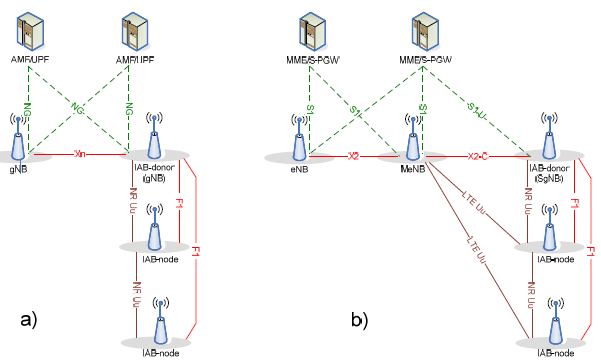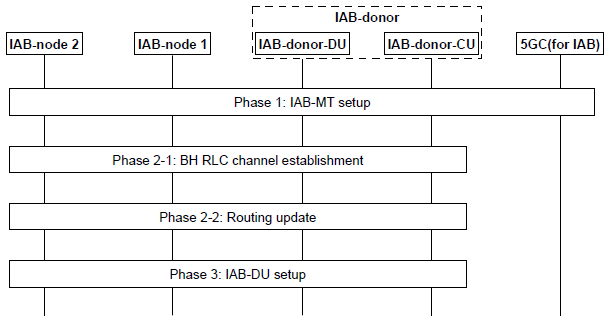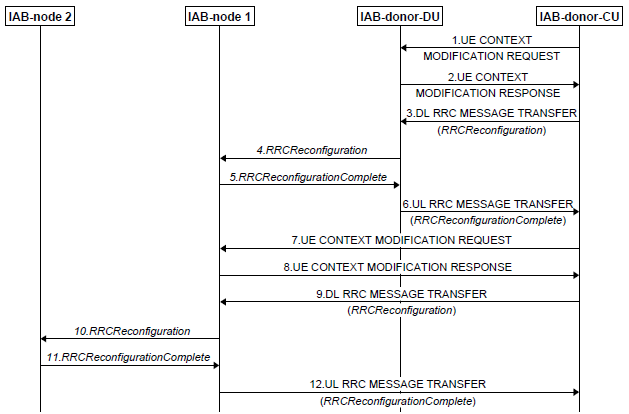|
5G/NR - IAB |
||
|
One of the most challenging things for 5G deployment would be the fact that the cell coverage is small (too small ?) comparing to other legacy technology (e.g, 3G, 4G). But this is not because of engineering limitation (so Engineers.. don't blame yourself -:), it is due to physics. It is a common sense that a cell using higher frequency would have smaller radius (smaller coverage) comparing to the cells using lower frequency. In most cases, 5G(NR) cell would use higher frequency than the legacy cell (3G or 5G). Especially 5G FR2 uses much, much higher frequency than legacy cell or 5G FR1. I haven't seen any documents explicitely stating the exact cell radius of 5G cells, but I noticed that most of field test result showing the jaw-dropping speed especially in mmWave (FR2) is done within the radius of 300 m (NOTE : I heard of some cases where mmWave communication maintained reaching a few km but it was the case between mmWave cell and High Power CPE). Think of how many of gNB we have to deploy to provide good and wide coverage with such a small radius. Even if carriers decided to invest enough money to scatter the cells in every few hundred meters, there would still be technical challenges. It is how they can branching out fibers to connect to such a huge amount of cells. It would be a natural for engineers to come up with such an idea of connecting some cells wirelsslessly instead of using fiber. This is the basic idea of IAB. In IAB, usually a Macro Cell works as IAB donor and one or more of small cells (called IAB Node) is connected wirelesslesy to the IAB donor. You can think of IAB Node as a relay cell wirelessly connected to a donor. If a UE is connected to an IAB node, the communcation gets relayed to a macrocell via wireless IAB backhaul and then reaches corenetwork via optical fiber that is connected to the macro cell.
More formal representation of IAB within overal 5G network is shown in 38.300 as follows. < 38.300-Figure 4.7.1-1 Figure 4.7.1-1: IAB architecture; a) IAB-node using SA mode with NGC; b) IAB-node using EN-DC >
What frequency is used for IAB wireless backhaul link ?Even in legacy technology, you may see some cases where the backaul links are connected wirelessly. But in most of those cases, they use different frequencies (in most cases non-cellular frequency) than cellular channel frequency and use their own protocol (non-3GPP) proprietorily designed for the connection. On the contray, in IAB the backhaul frequency is also NR band. It may be same as the access link frequency or different from the access link frequency, but it uses the NR band/frequency defined in 3GPP NR specification. What kind of protocol is used for Backhaul Link ?The radio protocol for the backhaul link is very similar to access link (i.e, probotol between UE and a cell). In IAB Backhaul, IAB Node act like a UE communicating with a IAB Donor. You see the block labeled 'MT' in the following illustration and this block act like a UE to the IAB Donor. It performs cell search and perform RACH and RRC signaling for radio resource allocation and authentication. The difference between the backhaul protocol and regular access link protocol would be that the highest layer in the protocol is RLC. (See 38.874 ,38.300 and 38.401 for the details of this protocol). As you may notice, IAB works as DU in the overall RAN architecture. (NOTE : Refer to this page for CU/DU separation). < 38.874 Figure 6.3.1-1: Reference diagram for architecture 1a (SA-mode with NGC) >
Following diagrams from 3GPP spec would give you more detailed picture on the protocol stack for IAB backhaul link. < 38.401 - Figure 8.12.1-1: The integration procedure for IAB-node in SA >
< 38.401 - Figure 8.9.8-1: Signalling flow for IAB BH RLC channel establishment procedure >
Reference :[1] The 5G Evolution:3GPP Releases 16-17 (5G Americas) [2] RP-202343 - Revised WID: Integrated Access and Backhaul for NR (3GPP Work Item Description) [3] TR 38.874 - NR; Study on Integrated Access and Backhaul [4] TS 38.174 - Integrated Access and Backhaul (IAB) radio transmission and reception [5] TS 38.340 - Backhaul Adaptation Protocol (BAP) specification [6] 38.306 - NR;User Equipment (UE) radio access capabilities Section 4.2.15 IAB Parameters [7] 38.300 NR and NG-RAN Overall description; Stage-2 - NR;User Equipment (UE) radio access capabilities - Section 4.7 Integrated Access and Backhaul [8] 38.401 - NG-RAN; Architecture description Section 6.1.3, 6.1.4 YouTube
|
||




